Normally when I mix St-Germain cocktails, I’m trying to match the liqueur’s floral notes. But St-Germain also has a fruity sweetness to it that’s been likened to lychee fruit. So that got me thinking: could I use St-Germain in a cocktail tribute to the flavors of southeast Asia, where lychee is a common ingredient? And the answer is: yes, yes I could. Nole and I are suckers for southeast Asian cuisines, with their amazing flavors and amazing foods, making this a pretty easy cocktail to taste-test as I worked on the recipe: the sweet and funky Mai Pen Rai.– Andrew

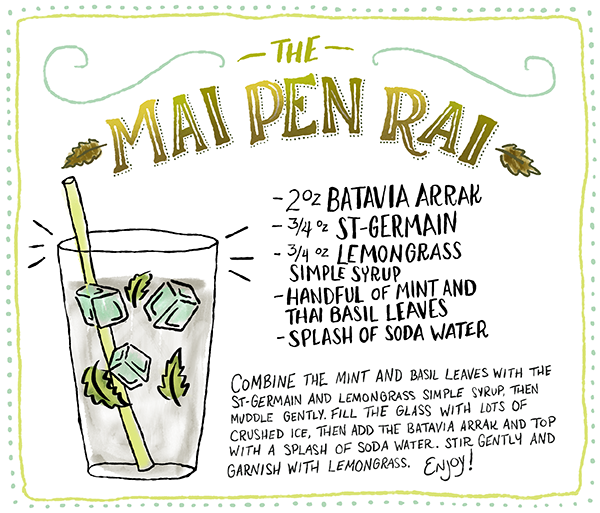
Illustration by Shauna Lynn for Oh So Beautiful Paper
The Mai Pen Rai
2 oz Batavia Arrak
3/4 oz St-Germain
3/4 oz Lemongrass Simple Syrup*
Handful of Mint and Thai Basil Leaves
Splash of Soda Water
Combine the mint and basil leaves with the St-Germain and lemongrass simple syrup, then muddle gently. Fill the glass with lots of crushed ice, then add the Arak and top with a splash of soda water. Stir gently and enjoy!
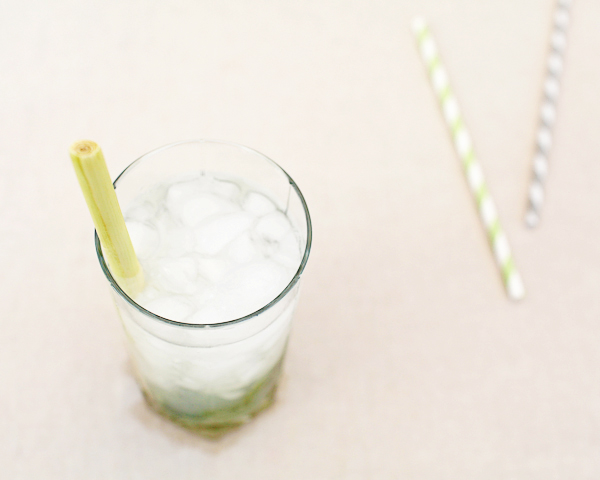
*To make the lemongrass simple syrup, first wash and dice a few stalks of lemongrass. Bring a cup of water to a boil, then reduce to a simmer and add two cups of turbinado sugar (my go-to for simple syrup) or white sugar (which will let the lemongrass flavor shine through more cleanly). Stir the sugar to dissolve it and then dump in the chopped lemongrass, stirring frequently for 20-30 minutes. At first you won’t notice much happening, but around the 15-20 minute mark, you should notice a really strong smell of lemongrass. Pour the mixture into a bottle, straining out the lemongrass, and store in the fridge for up to a month. You should end up with about 2 cups of syrup.
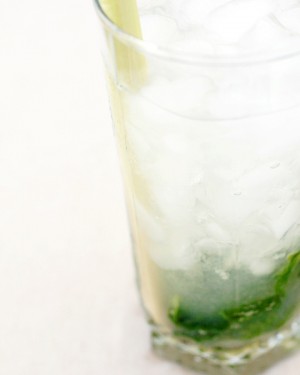
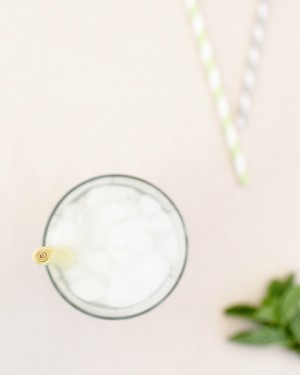
The Mai Pen Rai is something like (my imagined version of) a southeast Asian Mojito. It’s tall and cold and sweet, full of mint and ice, and the Arrack has something of a funky rum flavor to it. But it adds some local twists to set it apart. The Thai basil lends an herbal savoriness to it, while the St-Germain floral, fruity flavors mimic lychee fruit. And the Arrack…
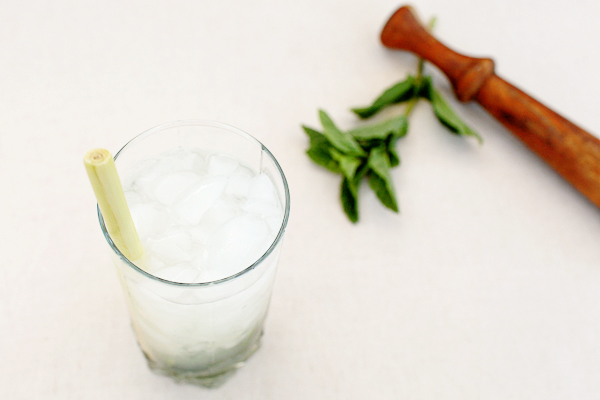
Batavia Arrack is, like Brazilian Cachaça, distilled from fermented sugarcane and a bit of red rice. It has some of the same funky flavors as Cachaça, which can be used in a pinch if you can’t find Batavia Arrack (and it’s not easy; we found ours at one of DC’s best liquor stores, Ace Beverage). However, do not substitute Lebanese Arrack, which is distilled from grapes, flavored with anise, and sweetened. Look for the real stuff, imported by Haus Alpenz: distilled on the Indonesian island of Java according to the same recipe used since the 17th century, in Chinese pot stills, aged in teak vats. Batavia Arrack, which featured in many of the earliest punch recipes, gets its name from the Arabic word ‘araq, meaning sweat (I’m guessing a metaphor of the distillation process) and a common word for spirits of any kind throughout much of Asia. In his awesome book Punch, David Wondrich says of Batavia Arrack that it “has a raw, flat tang that has a way of floating itself…right into that tiny, atavistic part of your brain that controls motor function and inhibition. It’s got that funk.” Amen.
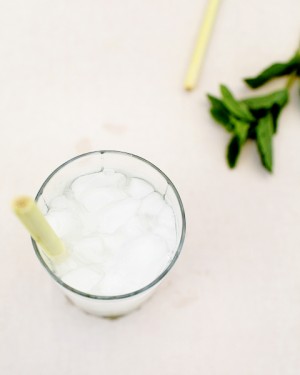

Oh, and the name? Mai pen rai is a Thai phrase that means, among other things: you’re welcome, no problem, it’s all good, no worries (and sometimes: not my problem). You get the idea. The Mai Pen Rai is just like that: a get along drink, an all-purpose problem solver, and, like the Mojito, perfect for just chilling out on a hot day.
Photo Credits: Nole Garey for Oh So Beautiful Paper
This post is brought to you in collaboration with St-Germain. All content, photos, recipes, and words are our own. Thank you for supporting the sponsors that help make Oh So Beautiful Paper possible!

How does the artist create the illustration above? Is it drawn by hand and then inserted into Adobe Illustrator?
Thanks,
Christie
Hi Christie,
We have commissioned recipe cards from a few illustrators over the past few months, and while I’m sure they all use different processes we only see the finished result. I’d recommend getting in touch with one of the illustrators directly (you can use the links provided below the recipe card illustration) if you have questions about the process they use to create the illustrations. I hope that helps!
–Nole